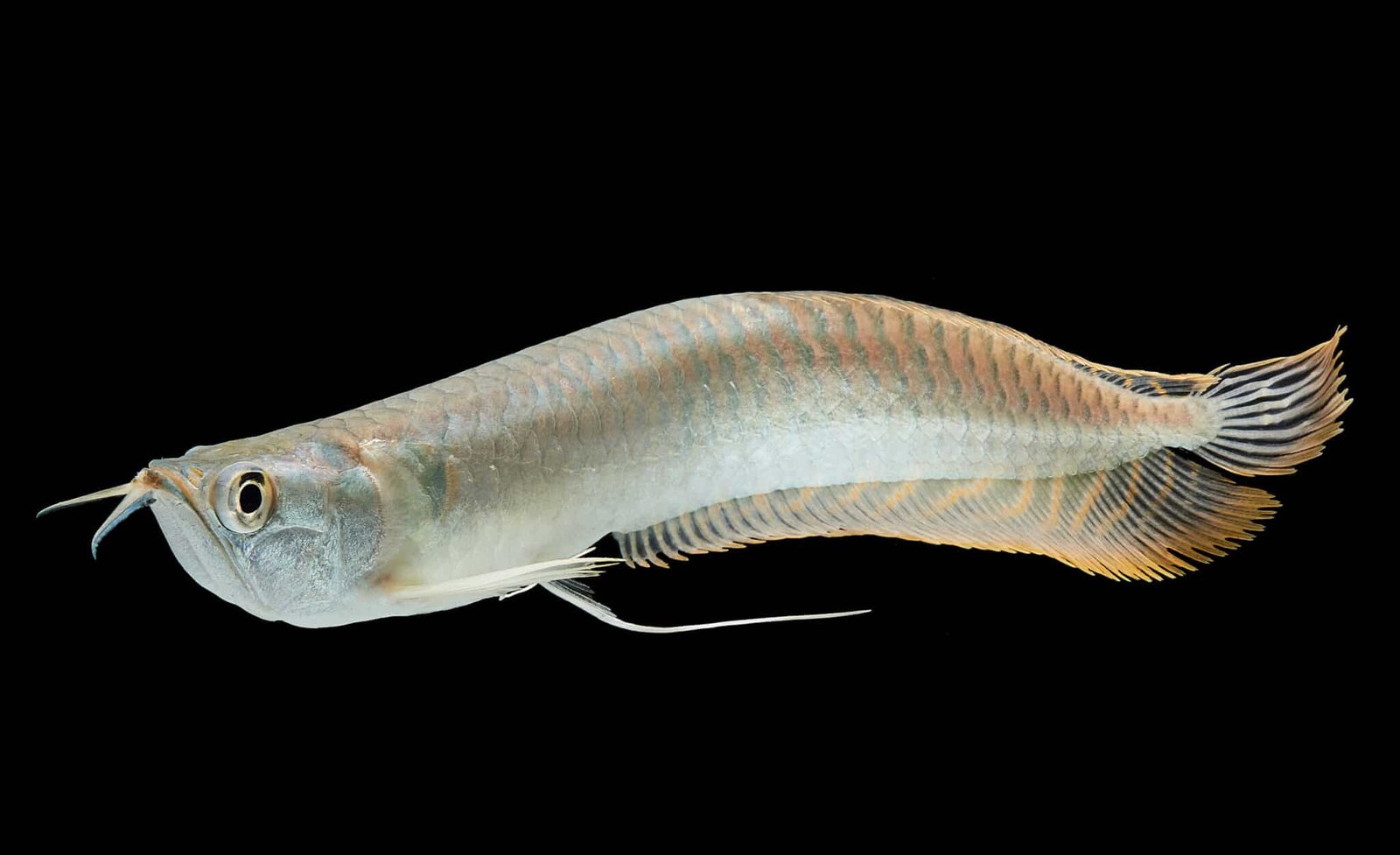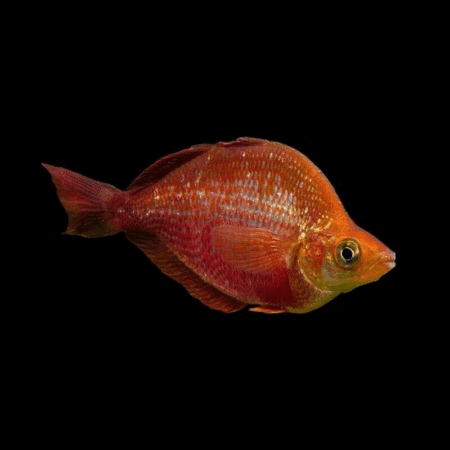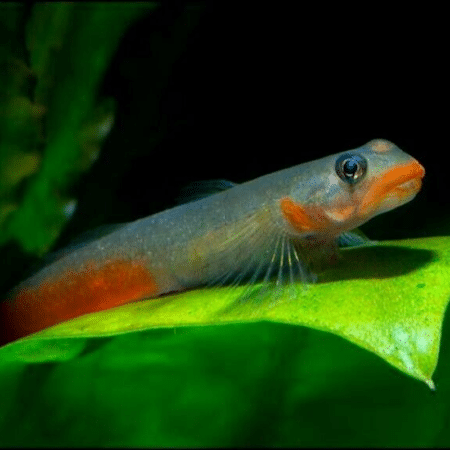Silver Arowana – Osteoglossum bicirrhosum, Stunning Freshwater Fish That Thrives in Community Tanks, Perfect for Aquarists Seeking Beautiful Tropical Companions, Elegant Addition for Vibrant Aquariums
£294.49 Original price was: £294.49.£250.00Current price is: £250.00.
Welcome the stunning Silver Arowana (Osteoglossum bicirrhosum) to your aquarium! This beautiful freshwater fish showcases shimmering scales and thrives in community tanks. Perfect for aquarists seeking elegant tropical companions, they flourish when provided with optimal care.
Species Introduction
The Silver Arowana, scientifically known as Osteoglossum bicirrhosum, is a striking freshwater fish that captivates aquarists with its elegant appearance and graceful swimming patterns. Native to the slow-moving rivers and floodplains of the Amazon Basin, this species thrives in a warm, tropical environment. The Silver Arowana is renowned for its metallic sheen, which can range from silver to bluish hues, and its long, slender body that can grow up to 36 inches in length in the wild, although aquarium specimens typically reach a maximum length of around 24 inches. These beautiful fish are carnivorous and primarily feed on insects, small fish, and crustaceans in their natural habitat. Their unique physical characteristics, including elongated pectoral fins and a long dorsal fin, make them one of the most sought-after species among tropical fish enthusiasts.
Care Requirements Dashboard
| Optimal Living Conditions | |
|---|---|
| Water Temperature | 24-27°C (75-81°F) |
| pH Level | 6.5-7.5 |
| Water Hardness | 4-12 dKH |
| Minimum Tank Size | 150L (40 gal) |
| Salinity | Freshwater |
| Care Level | Beginner Friendly |
Natural Behavior & Temperament
The Silver Arowana is known for its calm demeanor and inquisitive nature. These fish are often observed swimming gracefully near the surface of the water, where they exhibit their natural hunting behavior. In a community tank, they can be relatively peaceful, but their size and predatory instincts mean that they should not be housed with smaller fish that they might view as prey. Instead, consider tank mates that are similarly sized or larger. Social interactions among Arowanas can vary; they may display territorial behavior, especially during feeding times or when establishing their space in the tank. It is essential to provide ample swimming space and hiding spots to reduce stress and allow them to exhibit their natural behaviors.
Tank Setup Guide
Creating an ideal environment for your Silver Arowana is crucial for its health and well-being. Start with a spacious aquarium of at least 150 gallons, as these fish require ample swimming space. The substrate can be a fine sand or gravel, which mimics their natural habitat. Incorporate decorations such as driftwood, rocks, and plants, but ensure that they are securely placed to prevent any accidents. Floating plants can provide shade and security, which is beneficial for the Arowana. Additionally, consider using a high-quality filtration system to maintain water quality, as these fish are sensitive to poor water conditions. Regular water changes and monitoring of water parameters are essential to keep your aquatic companion thriving.
Water Quality Management
Maintaining optimal water quality is paramount when caring for Silver Arowanas. These fish thrive in slightly acidic to neutral pH levels ranging from 6.5 to 7.5. The water temperature should be kept between 75°F and 82°F (24°C – 28°C) to simulate their natural tropical environment. Regular testing of water parameters is essential, including ammonia, nitrite, nitrate, and hardness levels. Aim for a water hardness of 5 to 15 dGH. A well-maintained aquarium with stable water conditions will help prevent stress and disease in your Arowana. Remember to perform regular water changes of 20-30% every two weeks to keep the water clean and free from harmful toxins.
Feeding & Nutrition
Important Feeding Note
Silver Arowanas are carnivorous and require a protein-rich diet. Feed them high-quality pellets, live or frozen foods such as shrimp, fish, and insects. A varied diet will ensure they receive the necessary nutrients for growth and health. Young Arowanas should be fed small portions multiple times a day, while adults can be fed once or twice daily. Monitor their feeding habits and adjust portions accordingly to prevent overfeeding and maintain water quality.
Compatibility Guide
When considering tank mates for your Silver Arowana, it is essential to choose species that are similarly sized and non-aggressive. Suitable companions include larger cichlids, catfish, and other large freshwater fish. Avoid keeping them with small fish, as Arowanas may see them as potential prey. Additionally, be cautious with aggressive species that may harass or stress your Arowana. A well-planned community tank will enhance the overall experience for your aquatic companions and create a harmonious environment.
Health & Wellness
To ensure the health and well-being of your Silver Arowana, it is crucial to monitor their behavior and physical condition regularly. Common health issues include fin rot, ich, and swim bladder disease. Signs of illness may include lethargy, loss of appetite, or abnormal swimming patterns. Maintaining excellent water quality, a balanced diet, and a stress-free environment will help prevent many health problems. If you notice any concerning symptoms, consult with a veterinarian experienced in fish care for appropriate treatment options.
Breeding Information
Breeding Silver Arowanas in captivity can be challenging, as they require specific conditions to spawn successfully. They are mouthbrooders, meaning that the female will carry the fertilized eggs in her mouth until they hatch. To encourage breeding, provide a spacious tank with plenty of hiding spots and maintain optimal water conditions. The breeding pair will often exhibit courtship behaviors, such as swimming closely together and displaying their fins. After spawning, the female will guard the eggs until they hatch, which typically takes about 3-4 days. Once the fry are free-swimming, they can be fed infusoria or finely crushed flakes until they are large enough to consume larger foods.
Acclimation Process
When introducing a Silver Arowana to a new aquarium, it is essential to acclimate them slowly to reduce stress. Begin by floating the sealed bag containing the fish in the aquarium for about 15-20 minutes to equalize the temperature. After that, gradually introduce small amounts of aquarium water into the bag over the next hour. Once the fish have acclimated, gently release them into the tank using a net to avoid adding bag water, which may contain harmful substances. Monitor their behavior closely for the first few days to ensure they are adjusting well to their new environment.
Long-term Care
Silver Arowanas can live for over 15 years in captivity with proper care. As they grow, their dietary needs and tank requirements may change. Regularly assess the size of your aquarium and upgrade as necessary to accommodate their growth. Continue to monitor water quality, perform regular maintenance, and provide a balanced diet to ensure a long and healthy life for your aquatic companion. Engaging with your Arowana through feeding and interaction will also help strengthen the bond between you and your fish friend.
Natural Habitat Recreation
To recreate the natural habitat of the Silver Arowana, focus on providing a biotope that mimics its native environment. Incorporate driftwood, rocks, and plants to create hiding spots and swimming areas. Use a dark substrate to simulate the riverbed and provide floating plants to offer shade. Maintaining a gentle water flow will help replicate the slow currents found in their natural habitat. Additionally, consider adding leaf litter to the substrate, which can provide essential nutrients and a more natural feel to the aquarium.
Seasonal Care Adjustments
As seasons change, it is essential to adjust the care routine for your Silver Arowana. In warmer months, ensure that the water temperature remains stable, as fluctuations can stress the fish. During colder months, consider using a heater to maintain the optimal temperature range. Additionally, monitor water quality more frequently during seasonal changes, as variations in temperature can affect the nitrogen cycle in the aquarium. Providing consistent care throughout the year will help your Arowana thrive and remain healthy.
Expert Tips
For those looking to provide the best care for their Silver Arowana, consider these expert tips: First, invest in a high-quality filtration system to maintain excellent water quality. Second, regularly monitor water parameters to ensure stability. Third, provide a varied diet to promote health and coloration. Fourth, observe your fish closely for any signs of stress or illness. Lastly, engage with your Arowana through feeding and interaction to build trust and a bond with your aquatic companion. These practices will enhance your experience as an aquarist and ensure the well-being of your fish friend.
Troubleshooting
If you encounter issues with your Silver Arowana, such as changes in behavior or health problems, it is essential to address them promptly. Common issues include poor water quality, which can lead to stress and disease. If your fish is displaying signs of illness, such as lethargy or loss of appetite, check the water parameters immediately. If necessary, perform a partial water change and consult with an aquatic veterinarian for guidance on treatment options. Being proactive in troubleshooting will help maintain a healthy environment for your Arowana.
Scientific Background
The Silver Arowana belongs to the family Osteoglossidae, which is known for its unique characteristics among freshwater fish. This family is often referred to as the bony tongues due to the presence of a bony structure on the tongue that aids in feeding. Silver Arowanas are part of a group of ancient fish that have existed for millions of years, making them a fascinating species for aquarists and researchers alike. Conservation efforts are crucial to ensure the survival of this species in the wild, as habitat destruction and overfishing pose significant threats to their populations.
Advanced Care Techniques
For experienced aquarists looking to provide advanced care for Silver Arowanas, consider implementing techniques such as water conditioning and specialized feeding regimens. Use high-quality water conditioners to remove harmful substances and enhance the overall water quality. Additionally, consider integrating supplements into their diet to promote health and vitality. Regularly rotating food types can also prevent dietary deficiencies and encourage natural foraging behaviors. Engaging in these advanced care techniques will enhance the quality of life for your Arowana and create a thriving aquarium environment.
Water Quality Parameters
Optimal Range
24-27°C
6.5-7.5
0 ppm
Caution Zone
22-24°C or 27-29°C
6.0-6.5 or 7.5-8.0
0.25-0.5 ppm
Danger Zone
<22°C or >29°C
<6.0 or >8.0
>0.5 ppm
Monitoring Tip: Test water parameters weekly and perform regular water changes to maintain optimal conditions for your aquatic friends!
Frequently Asked Questions
Q: What tank size is required for the Silver Arowana?
The Silver Arowana requires a spacious tank to thrive, with a minimum size of 200 litres (around 52 gallons). Due to their potential length of up to 90 cm (35 inches), a larger tank is advisable to provide ample swimming space and minimise territorial disputes. A long, wide tank is ideal, allowing your fish friends to exhibit their natural swimming behaviour. Additionally, ensure the tank has a secure lid, as these fish are known to jump. Regular maintenance, including water changes and filtration, is essential to keep the environment healthy.
✓ Expert Tip
Consider a tank with a length of at least 1.5 metres to accommodate the Silver Arowana’s swimming needs.
Q: What water parameters do Silver Arowanas require?
Silver Arowanas thrive in well-maintained water conditions. The ideal temperature range is between 24-30°C (75-86°F), with a pH level of 6.5 to 7.5. Hardness should be maintained between 5-20 dGH. Regularly testing the water quality is crucial, as fluctuations can lead to stress or health issues. Ensure that ammonia and nitrite levels remain at 0 ppm, while nitrates should be kept below 20 ppm. A good filtration system is essential to maintain these parameters and provide a stable environment.
✓ Expert Tip
Consider using a heater and a quality filter to maintain stable water conditions.
Q: How often should I feed my Silver Arowana?
Feeding your Silver Arowana properly is crucial for their health. Young Arowanas should be fed once or twice daily, while adults typically require feeding every other day. Provide a varied diet consisting of high-quality pellets, live or frozen foods such as shrimp, worms, and fish. Avoid overfeeding, as this can lead to water quality issues and obesity. Monitor their body condition and adjust feeding amounts accordingly to maintain a healthy weight.
✓ Expert Tip
Incorporate a mix of foods to ensure a balanced diet and vibrant colours.
Q: What are the best tank mates for Silver Arowanas?
When selecting tank mates for Silver Arowanas, consider their size and temperament. Ideal companions include larger, peaceful species such as larger tetras, catfish, and some cichlids. Avoid small fish, as they may be seen as food. It’s also wise to keep an eye on aggressive species that could stress the Arowana. A well-planned community tank with ample space and hiding spots will help reduce territorial disputes and ensure a harmonious environment.
✓ Expert Tip
Introduce new fish gradually to minimise stress and aggression.
Q: How do I properly acclimatise a Silver Arowana to my aquarium?
Acclimatising your Silver Arowana is essential to reduce stress. Start by floating the sealed bag containing your fish in the aquarium for about 15-20 minutes. This allows the water temperature to equalise. After that, gradually add small amounts of tank water to the bag every 10 minutes for an hour. Once the fish has adjusted to the water parameters, gently release it into the tank using a net, avoiding adding any bag water into the aquarium. This method helps ensure a smooth transition.
✓ Expert Tip
Be patient and allow the fish to explore its new environment without disturbance.
Q: What are the signs of a healthy Silver Arowana?
A healthy Silver Arowana displays vibrant colouration, clear eyes, and active swimming behaviour. Look for a well-rounded body shape without any visible signs of swelling or deformities. Healthy Arowanas will also exhibit consistent feeding habits and show no signs of lethargy. Regularly check for any changes in behaviour, such as excessive hiding or scratching against objects, as these may indicate stress or health issues. Maintaining water quality is crucial in promoting overall health.
✓ Expert Tip
Monitor your fish regularly to catch any potential health issues early.
Q: How do I successfully breed Silver Arowanas?
Breeding Silver Arowanas can be challenging, as they require specific conditions. A separate breeding tank of at least 300 litres is recommended. Maintain a temperature of 28-30°C (82-86°F) with slightly acidic water (pH around 6.5). Provide flat surfaces such as rocks or spawning mats for egg laying. Ensure a balanced diet rich in protein for both the male and female. After spawning, remove the parents to prevent them from eating the eggs. With patience and the right conditions, you can enjoy the breeding process.
✓ Expert Tip
Consider keeping the breeding pair together to encourage bonding.
Q: What temperature should I maintain for my Silver Arowana?
The ideal temperature range for Silver Arowanas is between 24-30°C (75-86°F). Maintaining this temperature is crucial for their health and overall well-being. Sudden fluctuations can lead to stress and susceptibility to diseases. Use a reliable aquarium heater with a thermostat to ensure stable temperatures, and regularly monitor the water with a thermometer. It is also advisable to place the heater near the water flow from the filter to evenly distribute heat throughout the tank.
✓ Expert Tip
Avoid placing the heater in direct sunlight to prevent overheating.
Q: How long do Silver Arowanas typically live in captivity?
In captivity, Silver Arowanas can live for around 10-15 years, provided they are given optimal care. Ensuring a stable environment, maintaining water quality, and providing a balanced diet are crucial factors in promoting longevity. Regular health checks and monitoring for signs of stress or illness can also contribute to a longer lifespan. A proper-sized tank, along with suitable tank mates, will enhance their living conditions and overall quality of life.
✓ Expert Tip
Invest time in learning about their needs to ensure a happy, healthy life.
Q: What type of substrate is most suitable for Silver Arowanas?
A fine sand or smooth gravel substrate is ideal for Silver Arowanas. This type of substrate allows for easy cleaning and prevents injury to the fish. Avoid sharp or jagged materials that could harm their delicate bodies. Additionally, a dark substrate can enhance the natural colours of the Arowana, making them appear more vibrant. Regular maintenance, including vacuuming the substrate during water changes, will help maintain a clean environment.
✓ Expert Tip
Consider layering substrate for a more natural aquascape.
Q: What behavioural patterns should I expect from Silver Arowanas?
Silver Arowanas are generally peaceful but can exhibit territorial behaviour, especially when establishing their space in the tank. They are known for their active swimming and may spend time near the surface, displaying their natural hunting instincts. Additionally, they can be curious and may respond to their owners, often becoming accustomed to feeding routines. It is essential to provide ample space and hiding spots to reduce stress and allow for natural behaviours.
✓ Expert Tip
Observe their behaviour closely to identify any signs of stress or discomfort.
Q: How can I prevent common diseases in Silver Arowanas?
Preventing diseases in Silver Arowanas largely revolves around maintaining optimal water quality and a stress-free environment. Regular water changes, proper filtration, and monitoring water parameters are essential. Quarantining new fish before introducing them to the main tank can help prevent the spread of diseases. Additionally, providing a varied diet rich in nutrients will bolster their immune system. Observe for any signs of illness, such as changes in behaviour or appearance, to address issues promptly.
✓ Expert Tip
Regularly clean the tank and equipment to minimise disease risks.
Q: What lighting conditions do Silver Arowanas prefer?
Silver Arowanas prefer moderate lighting that mimics their natural habitat. Bright, harsh lights can cause stress, so consider using LED lights with adjustable intensity. A dimly lit environment can help them feel secure, especially when providing hiding spots with plants or decorations. It is also beneficial to create a day-night cycle of about 10-12 hours of light, which can help regulate their natural behaviours and encourage a healthy lifestyle.
✓ Expert Tip
Use a timer to maintain consistent lighting schedules.
Q: How do I recognise stress in Silver Arowanas?
Recognising stress in Silver Arowanas is vital for their well-being. Signs include erratic swimming, excessive hiding, or flashing against objects. Changes in eating habits, such as refusing food, can also indicate stress. Additionally, observe for any physical signs, such as clamped fins or unusual colouration. If you notice these behaviours, assess the tank conditions, including water quality and tank mates, to identify potential stressors and take corrective action promptly.
✓ Expert Tip
Create a calm environment to help reduce stress levels.
Q: What natural habitat conditions should I replicate for Silver Arowanas?
To replicate the natural habitat of Silver Arowanas, create a spacious environment with plenty of swimming space. They thrive in gently flowing waters, so a good filtration system is essential. Incorporate natural elements such as driftwood, rocks, and plants to provide hiding spots and mimic their wild habitat. The use of a dark substrate can enhance their colour and comfort. Aim to maintain water parameters similar to their natural conditions to ensure their overall health and vitality.
✓ Expert Tip
Research their natural habitat to better understand their needs.













Emily Carter (verified owner) –
I recently purchased the Silver Arowana (Osteoglossum bicirrhosum) at 14 cm, and I couldn’t be happier! From the moment I set him up in my 120-gallon tank, he has brought so much life to my aquarium. After about two months of having him, I can confidently say that he’s one of the healthiest and most vibrant freshwater fish I’ve ever owned. His silvery scales shimmer beautifully under the aquarium lights and his graceful swimming style is mesmerizing.
I love how he interacts with his environment, constantly exploring and even picking at the substrate occasionally. Compared to my previous fish, this arowana exhibits a much more dynamic and engaging personality, which really adds to the overall enjoyment of my aquarium.
One minor consideration is that they do require a good amount of space and clean water, so I’d recommend this fish for someone with a larger tank and a commitment to maintenance. If you’re looking to add a stunning centerpiece to your aquarium, I wholeheartedly recommend this Silver Arowana. You won’t regret it, and your tank will thank you!
Emily Carter (verified owner) –
I recently added the Silver Arowana to my 150-gallon community tank, and let me tell you, it has been a game changer! This stunning freshwater fish is not just a visual delight with its shimmering scales and graceful movements, but it also has a wonderful personality that brings life to the tank. After about two months, I’ve noticed how it interacts with my other tropical fish, which range from cichlids to tetras. They all seem to coexist peacefully, which is a testament to the Arowana’s adaptable nature.
One of the standout features for me has been its active swimming behavior; it truly seems to enjoy the space and well-planted layout of my aquarium. I was a bit worried about compatibility, but it has shown minimal aggression and thrives alongside its tank mates. Just keep in mind that they do need ample swimming space, so a larger setup is ideal.
If you’re looking for a centerpiece fish that’s both beautiful and engaging, I highly recommend the Silver Arowana. It’s perfect for aquarists who, like me, want a vibrant tropical fish for their community tank! Plus, the shipping was quick and the fish arrived healthy and well-packaged. I couldn’t be happier with my purchase!